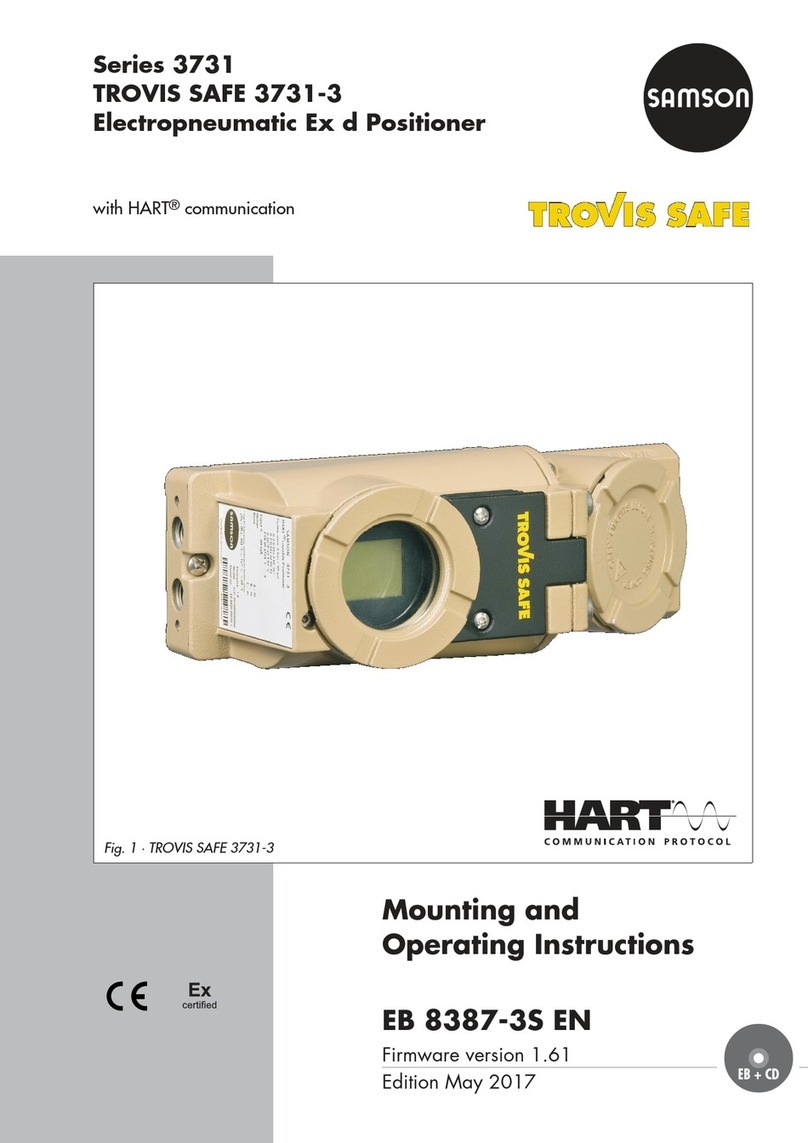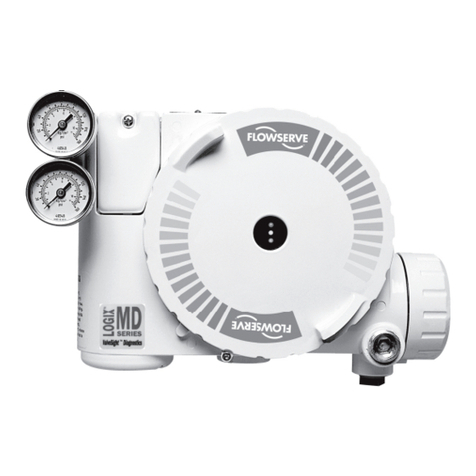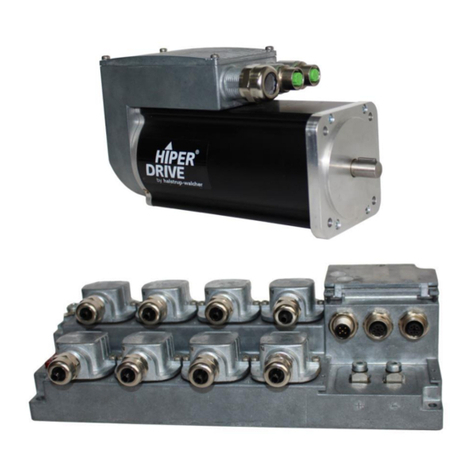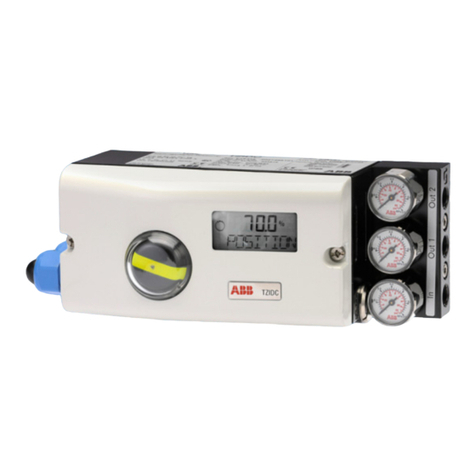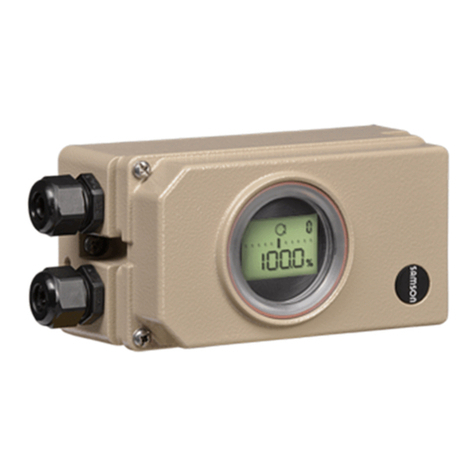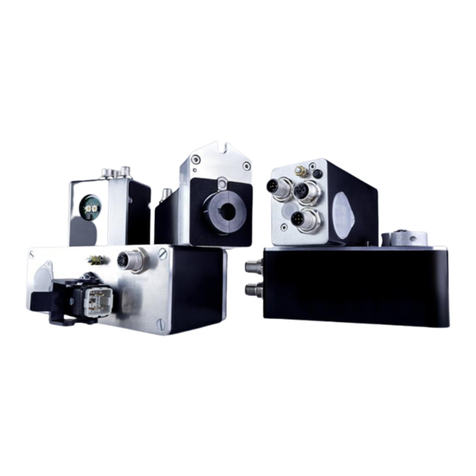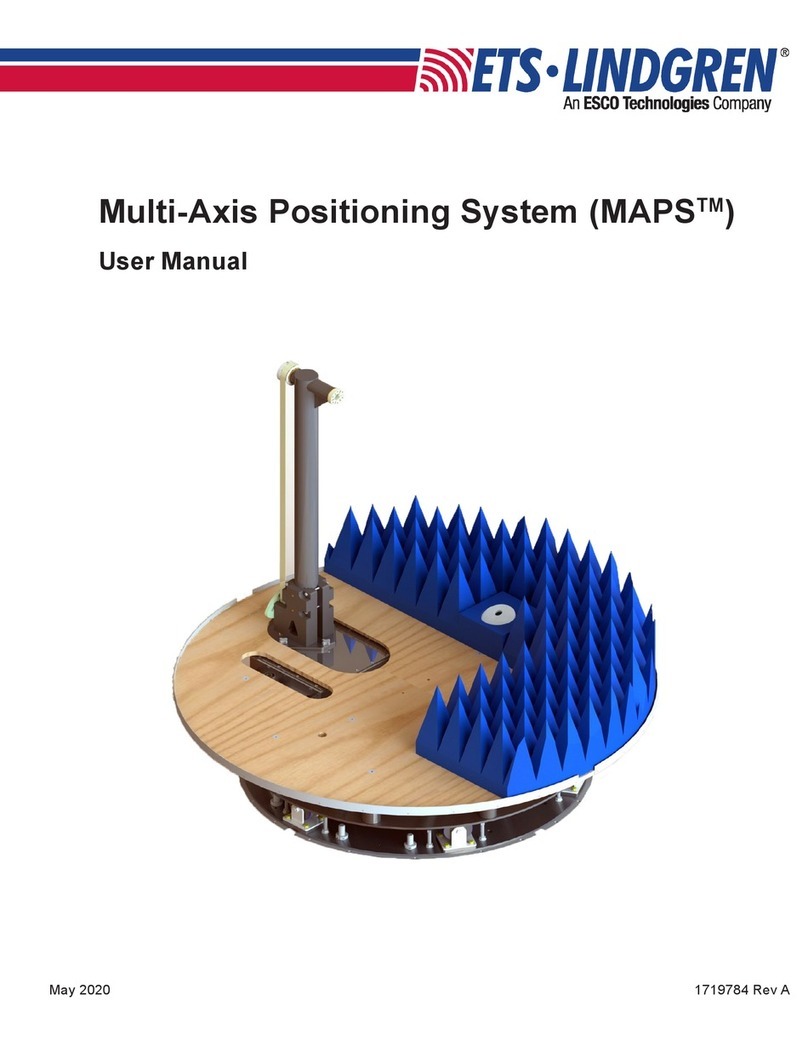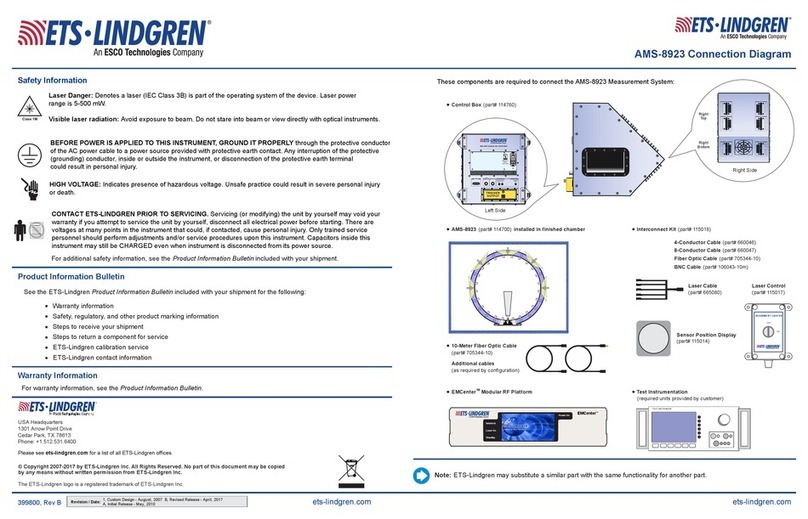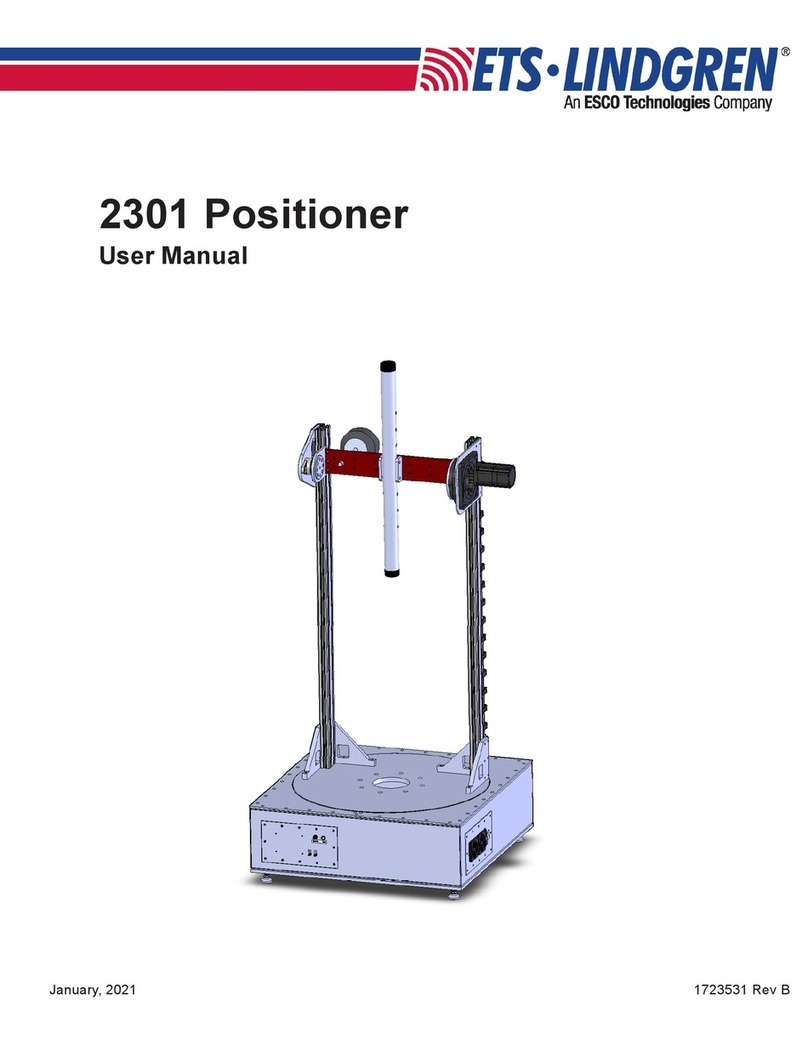
3
TABLE OF CONTENTS
NOTES, CAUTIONS, WARNINGS . . . . . . . . . . . . . . . . . . . . . . . 4
SAFETY INFORMATION . . . . . . . . . . . . . . . . . . . . . . . . . . . 5
INTRODUCTION. . . . . . . . . . . . . . . . . . . . . . . . . . . . . . . 6
Standard Configuration . . . . . . . . . . . . . . . . . . . . . . . . . . . . . . . . .6
Model 2303 Positioner Assembly . . . . . . . . . . . . . . . . . . . . . . . . . . .6
EMCenter Modular RF Platform. . . . . . . . . . . . . . . . . . . . . . . . . . . .6
Optional Items . . . . . . . . . . . . . . . . . . . . . . . . . . . . . . . . . . . . .6
ETS-Lindgren Product Information Bulletin . . . . . . . . . . . . . . . . . . . . . . . .6
MAINTENANCE . . . . . . . . . . . . . . . . . . . . . . . . . . . . . . . 7
Routine Maintenance . . . . . . . . . . . . . . . . . . . . . . . . . . . . . . . .7
6-Month Service . . . . . . . . . . . . . . . . . . . . . . . . . . . . . . . . . . .7
12-Month Service . . . . . . . . . . . . . . . . . . . . . . . . . . . . . . . . . . .7
Replacement Parts . . . . . . . . . . . . . . . . . . . . . . . . . . . . . . . . . . .7
Service Procedures . . . . . . . . . . . . . . . . . . . . . . . . . . . . . . . . . . .7
Safety Precautions. . . . . . . . . . . . . . . . . . . . . . . . . . . . . . . . . . . .7
SPECIFICATIONS . . . . . . . . . . . . . . . . . . . . . . . . . . . . . . 8
Physical Specifications. . . . . . . . . . . . . . . . . . . . . . . . . . . . . . . . . .8
Electrical Specifications . . . . . . . . . . . . . . . . . . . . . . . . . . . . . . . . .9
INSTALLATION . . . . . . . . . . . . . . . . . . . . . . . . . . . . . . 10
Pre-Installation Tasks . . . . . . . . . . . . . . . . . . . . . . . . . . . . . . . . . 10
ELECTRICAL INSTALLATION . . . . . . . . . . . . . . . . . . . . . . . . 12
Elevation Axes Input / Output Connections . . . . . . . . . . . . . . . . . . . . . . . 12
Trigger . . . . . . . . . . . . . . . . . . . . . . . . . . . . . . . . . . . . . . 12
Fiber Optic. . . . . . . . . . . . . . . . . . . . . . . . . . . . . . . . . . . . . 12
Turntable Electrical Installation . . . . . . . . . . . . . . . . . . . . . . . . . . . . 13
OPERATION . . . . . . . . . . . . . . . . . . . . . . . . . . . . . . . 14
2303 Positioner Command Set . . . . . . . . . . . . . . . . . . . . . . . . . . . . . 14
General Command Structure . . . . . . . . . . . . . . . . . . . . . . . . . . . . 14
System Commands . . . . . . . . . . . . . . . . . . . . . . . . . . . . . . . . 16
Control Commands . . . . . . . . . . . . . . . . . . . . . . . . . . . . . . . . 18
Error Codes . . . . . . . . . . . . . . . . . . . . . . . . . . . . . . . . . . . . 23
NETWORK CONFIGURATION . . . . . . . . . . . . . . . . . . . . . . . 24
Network Factory Configuration. . . . . . . . . . . . . . . . . . . . . . . . . . . . . 24
Changing the Positioner IP Address . . . . . . . . . . . . . . . . . . . . . . . . . . 24
Reset to Factory Default . . . . . . . . . . . . . . . . . . . . . . . . . . . . . . . . 25
Computer Network Configuration . . . . . . . . . . . . . . . . . . . . . . . . . . . 26
Background Information. . . . . . . . . . . . . . . . . . . . . . . . . . . . . . . . 27
Multiple Devices in a LAN . . . . . . . . . . . . . . . . . . . . . . . . . . . . . . . 31






